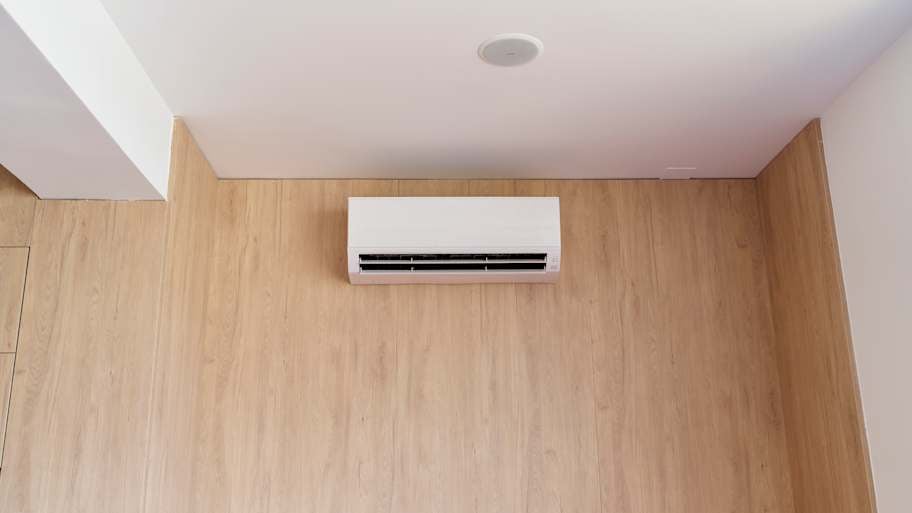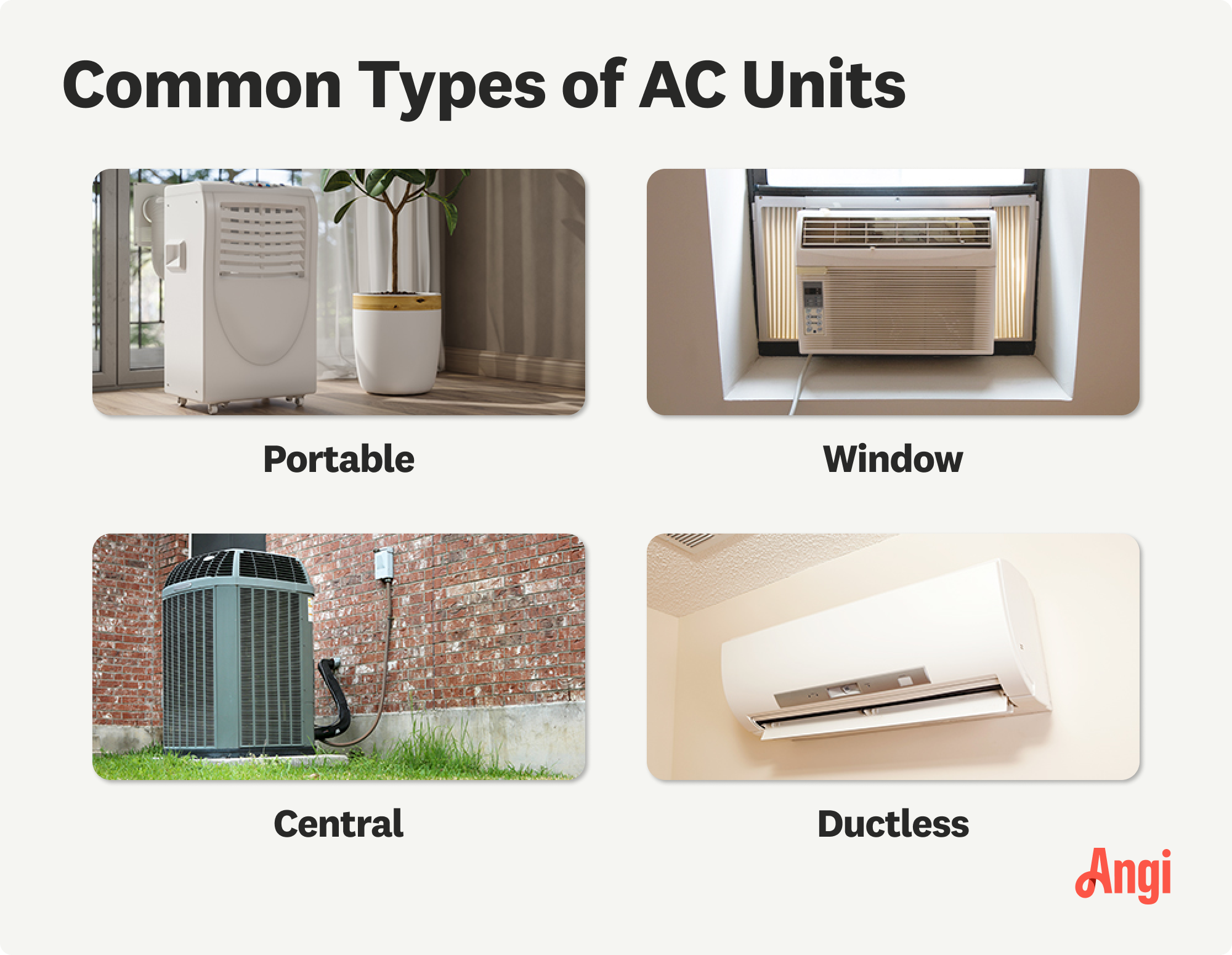
Discover the cost to install ductwork. Learn about average prices, cost factors, and tips to save money on your ductwork installation project.
It’s a duel between dual-home air conditioner pros and cons


There are three options for dual-home air conditioners: a mini-split, a zoning system, and separate AC units.
Dual-home air conditioners can be more energy efficient, but they also come at a higher cost.
While they’re a good choice for larger homes, homeowners in smaller homes may not get the same benefits with this type of air conditioner.
If you’re trying to beat the heat this summer and summers to come, you may be considering a dual-home air conditioner system. Understanding the ways they can help cool your home, but also the disadvantages that come with each system, can help you make the best decision. An air conditioner installer can break down the available options as well as the pros and cons of dual-home air conditioners.
Traditional air conditioning, or central air conditioning, consists of a split system with one unit outside the home and another inside. Each unit houses its own components that work together to cool the home via one thermostat.
Dual-home air conditioners, on the other hand, allow you to control the temperature in multiple areas. This means you can tailor cooling to specific rooms, whereas a split system cools the entire home to the same temperature. The following breakdown describes the types of dual-home air conditioners that you can choose from.
A mini-split system is more efficient than a traditional AC and consists of multiple indoor units connected to one outdoor unit. The indoor units are controlled separately, letting you choose the temperature based on the needs of individual rooms. One of the advantages of these ductless systems is that the home doesn’t need existing ductwork.
In hotter climates, some homeowners opt to install two separate air conditioning systems in their home. While this is more expensive than installing one unit, it offers certain protections. If one air conditioner fails, the second unit can continue cooling the home. You can also control separate areas of the home—like keeping the upstairs thermostat set a few degrees cooler than the downstairs, so it’s more comfortable for sleeping.
Installing an HVAC zoning system allows you to control the temperature in different zones of your home with separate thermostats. It directs air flow to where it’s most needed via a system of dampers. This system can work with a standard central AC system and make your home more comfortable with different temperatures in separate rooms.
| Pros of Dual-Home Air Conditioners | Cons of Dual Home Air Conditioners |
|---|---|
| More control over the temperature in different areas | More expensive to install |
| More energy efficient | Multiple units to maintain |
| Ductless options are available | Not ideal for smaller homes |

Better temperature control is the biggest benefit of installing dual-home air conditioners, but you can also enjoy increased energy efficiency and the flexibility of having a ductless system.
Perhaps some rooms in your home are always stuffy or too cold. Dual-home air conditioners solve this problem by providing better temperature control. You can set the thermostat a bit lower in stuffy rooms and higher in cold rooms. These systems are also beneficial for households with family members with varying temperature preferences.
With each of these systems, you can direct cool air where it’s needed and not waste it in areas where it’s not necessary, keeping cooling bills down. Mini-split systems are ductless, which can reduce the amount of energy loss that occurs when the system pushes air through the ducts—which is up to 30% of a home’s energy consumption, according to the U.S. Department of Energy.
Since mini-splits are ductless, they’re ideal for homes without existing ductwork. Installing ductwork costs between $500 and $2,200, so if you prefer not to install ductwork, you can stick with a ductless system.
Even though dual-home air conditioners offer better temperature control and, in the case of mini splits, work well in homes without ductwork, they also come with some disadvantages. Installing one of these systems can be more expensive than installing a traditional split system, and there are more units to maintain, so they aren’t ideal for all homes.
If you choose to go the two-system route, expect to pay around double the cost of a single system because of the additional unit and added labor. The cost of an HVAC zoning system and the cost of mini-split installation will also be more expensive than a traditional system.
Here are some of the costs to keep in mind:
Mini-split system: $2,000–$14,500
Two separate units: $7,000–$16,000
HVAC zoning system: $1,500–$8,500
HVAC maintenance costs range from $175 to $650, and if you’re installing multiple units, costs will be higher. More units also mean there’s more opportunity for things to go wrong, so you may be calling an HVAC technician to your home more than you would for a single unit.
Smaller homes won’t benefit as much from installing a dual-home air conditioning system. With less square footage to cool, the air can spread more evenly throughout the home. If you’re still dealing with rooms that are too hot, you can add a fan or a window air conditioning unit to even things out.
While dual-home air conditioners offer more control, there are other types of air conditioners that may work in your home, including:
Central air conditioning: A traditional central air conditioning system costs between $3,900 and $7,900. This system will keep your whole home cool, but it lacks the control that dual-home air conditioners offer.
Window AC units: If you’re on a budget or have a small home, window air conditioning units may be a good fit. A window air conditioner costs $100 to $2,000 and can be placed in the warmest room in the home.
Portable AC units: A portable air conditioning unit costs between $100 and $500, and its most desirable feature is that it can be easily moved to where you need it most.


When you’re pricing out HVAC replacement costs, it pays to weigh all of your options. A dual-home air conditioner might be right for you if your home doesn’t have existing ductwork—in which case a mini-split is a viable option—but you’ll have to cover the higher costs for the unit and installation. However, if you live in a smaller home and prefer to save on installation and maintenance costs, a dual system might not be right for you.
In some cases, you can convert your existing AC system into a zoning system or add another unit to offer more control. To decide if a dual-home air conditioner is right for you, contact a local air conditioning pro who can walk you through the pros and cons for your specific situation.
From average costs to expert advice, get all the answers you need to get your job done.

Discover the cost to install ductwork. Learn about average prices, cost factors, and tips to save money on your ductwork installation project.

Inspections are an essential part of furnace maintenance. Prevent inconvenient breakdowns by budgeting for furnace inspection costs and repairs.

Find out the average humidifier repair cost, what impacts pricing, and how to save. Get expert tips to budget for your humidifier repair.

Wondering how to bleed a baseboard heater without a bleed valve? Here’s how to remove trapped air the old-fashioned way, with a boiler drain and water replacement.

Condensation on air vents suggests something is wrong with your HVAC system. Learn how to stop condensation on air vents through preventive measures.

Thinking about installing a heat pump in your home? Learn about the different types of heat pumps and the options you can choose from in this guide.